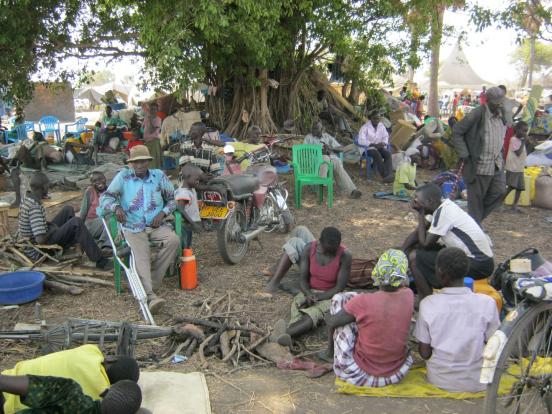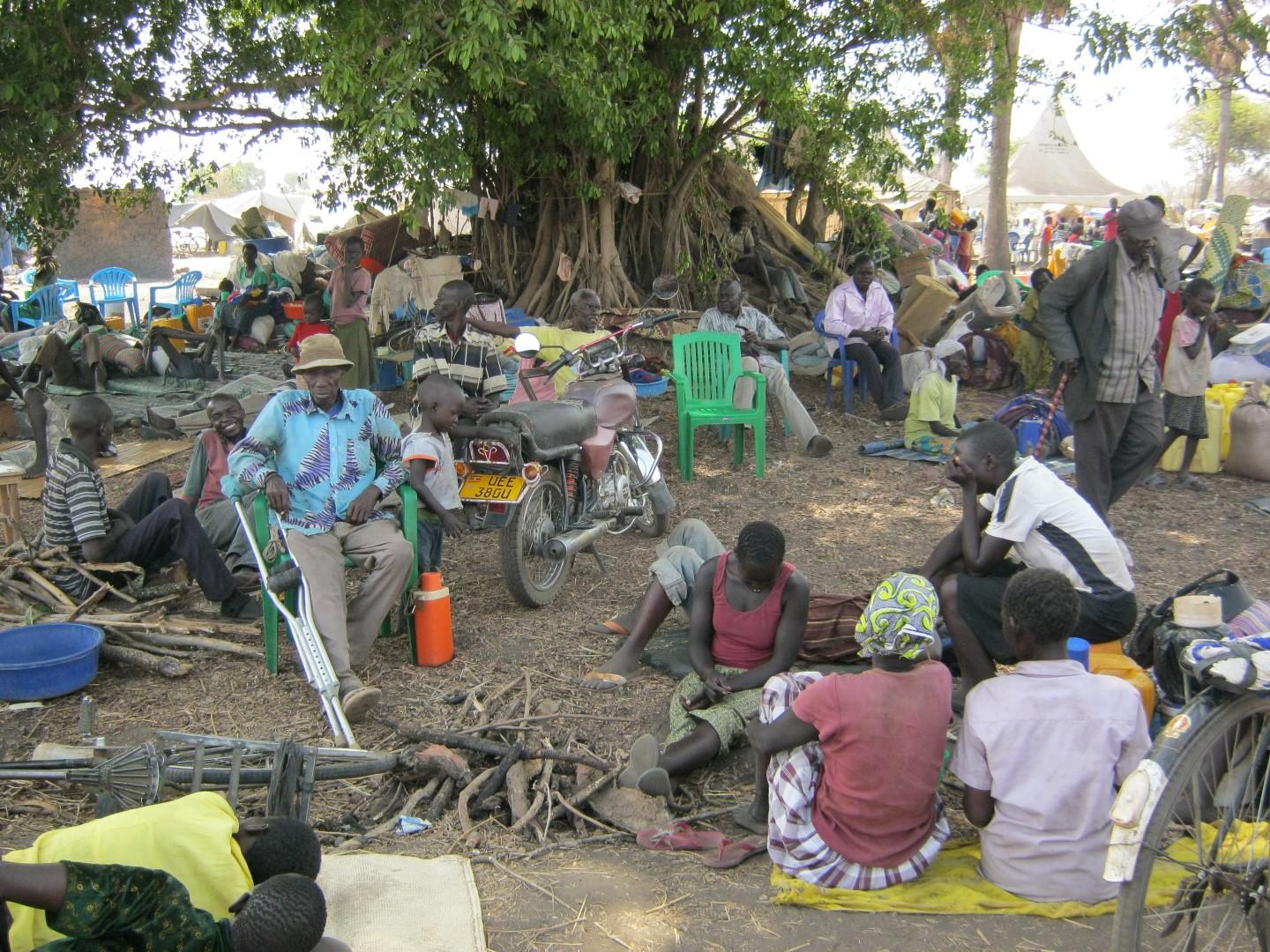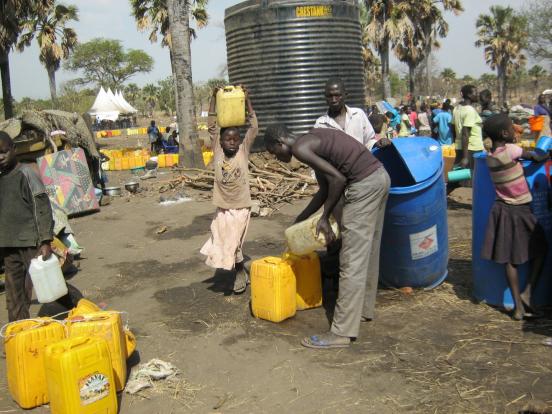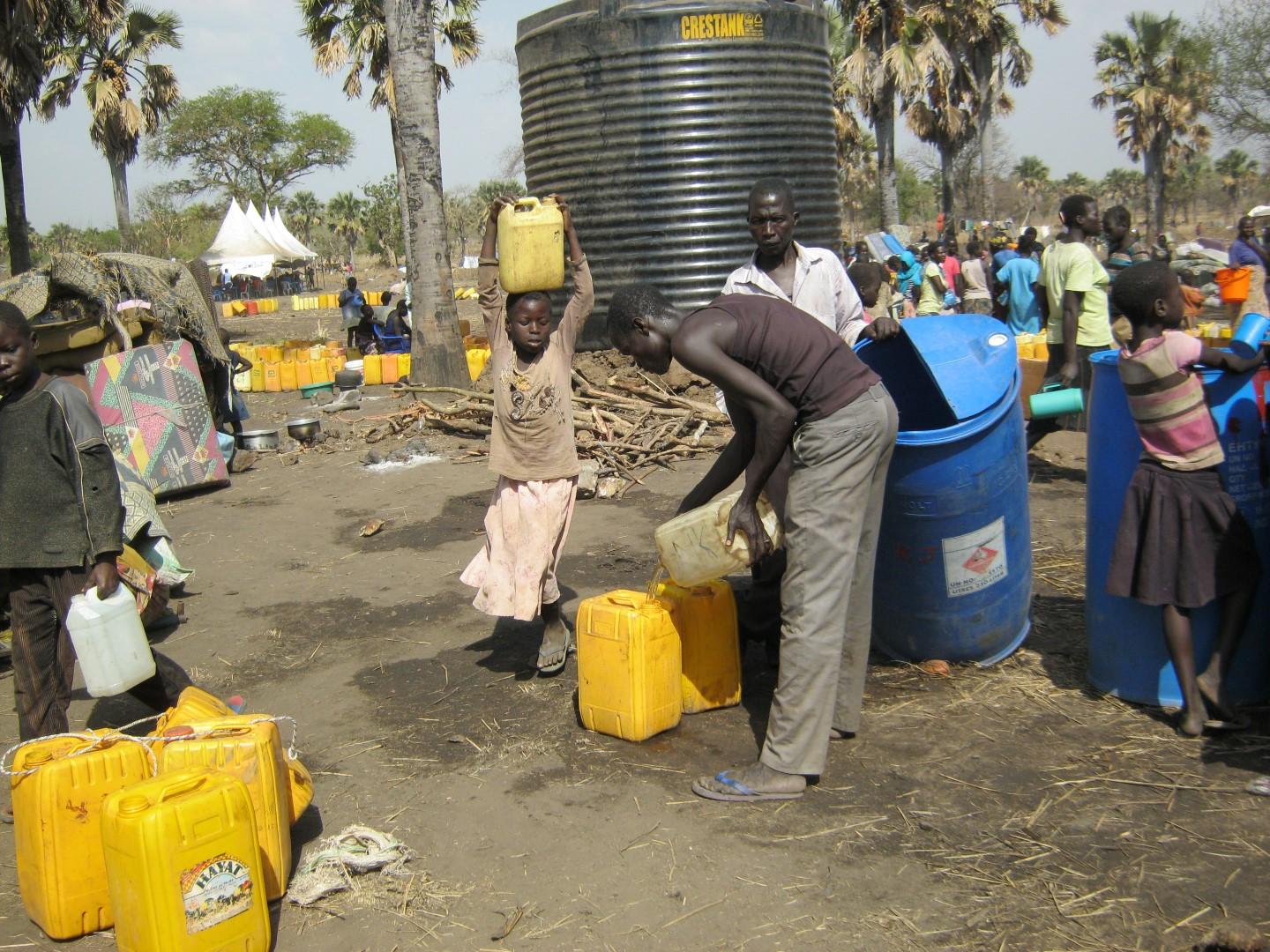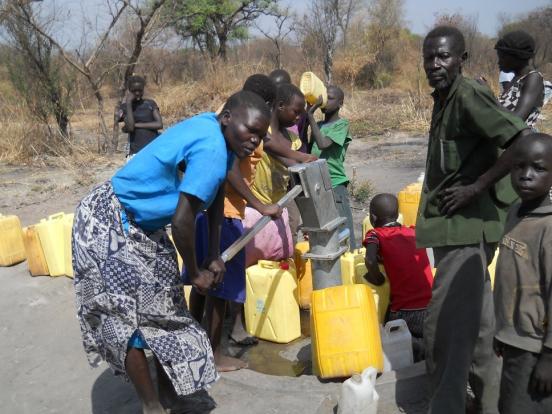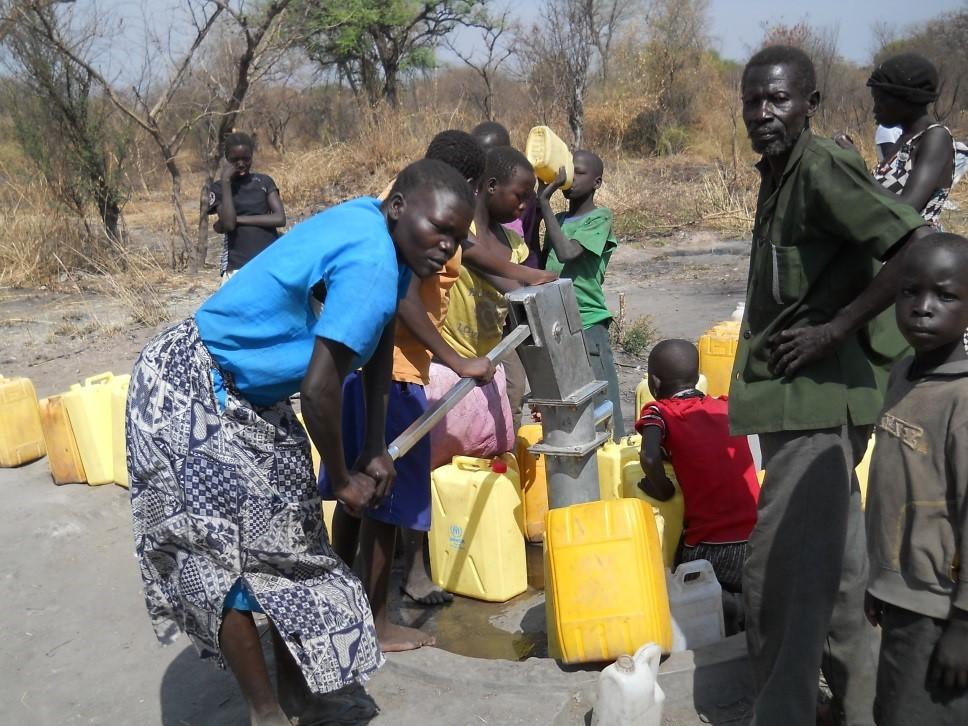Update on the South Sudanese refugee situation in Palorinya settlement

Update
South Sudan refugee crisis now third largest in the world as of UNHCR. As the war in South Sudan continues, humanitarian agencies report mass massacre, hunger, abductions, rape and property looting. For their lives, S. Sudanese flee to neighbouring states. Uganda remains their largest host country with over 748,603 of them and 130, 626 in Palorinya settlement, Moyo district. The number of refugees in Palorinya surpasses its planned capacity of 100,000 and continues to increase, exerting extreme pressure on the existing infrastructure and services. In Palorinya, LWF in partnership with UNHCR offers humanitarian aid to the needy S. Sudanese refugees in-terms of shelter, core relief items, protection, WASH services et al. However, with the mass growing refugee population, aid resources are stretched and can hardly reach all the needy arrivals.
LWF Achievements
WASH
• 5 boreholes drilled in Zone I extension.
• 6 water tanks installed in Zone I.
• 263 blocks of communal latrines and 263 blocks of communal bath shelters constructed.
• Distributed 86 sets of sanitary tool kits in Zone II (1 wheelbarrow, 5 pick axes, 5 spades, 5 metallic buckets and ropes per kit).
Construction
• Extension of the temporary kitchen.
• 4 structures constructed (2 blocks of 5-stance drainable VIP latrines and 2 biometric centres).
• Renovation of 3 structures at Palorinya Base Camp.
Protection
• 753 persons with special needs (PSNs) identified and receiving special assistance.
• 15 shelters constructed for 15 PSNs in Zone II.
• 700 women and girls supported with 2 pieces of soap and 2 packets of sanitary pads in Zone 1.
• 5,447 girls and women in Zone I and II received a pair of under wear to promote personal hygiene.
Shelter
• 6,040 refugees accommodated at the communal shelters.
• 23,755 households supported with core relief items like blankets, jerry cans, carpets, mats, hoes and pangas.
Environment
• 3, 629 people sensitized on environmental protection.
Identified Needs and Gaps
• Delayed supply of core relief items. More than 22,000 have not received the items, exposing them to extreme weather conditions and heavy rains expected in March.
• Poor roads in the settlements, affecting water trucking and movement. The condition is likely to worsen in the wet season.
• Need for more funding to establish additional water supply systems and sanitation facilities.
• Need for more funding towards improving staff and refugee living conditions especially housing as well as transportation.
• Inadequate staff due to insufficient funding, affecting service delivery.
• Desperation and loss of hope by refugees hence desperate measures by some like suicide.



